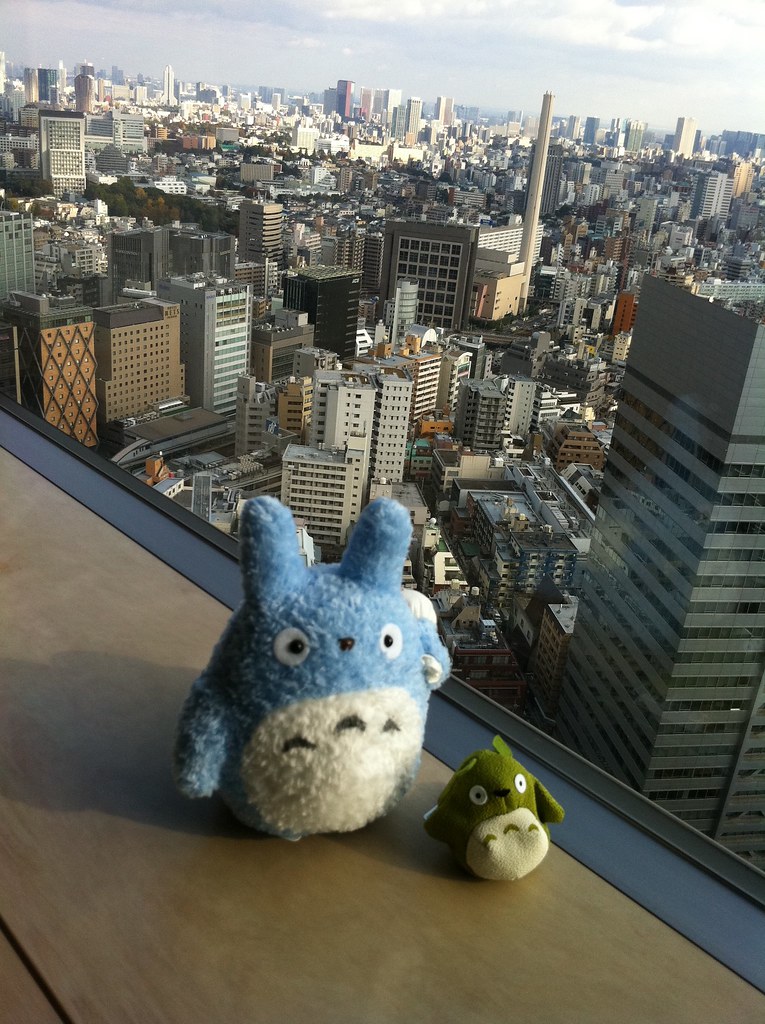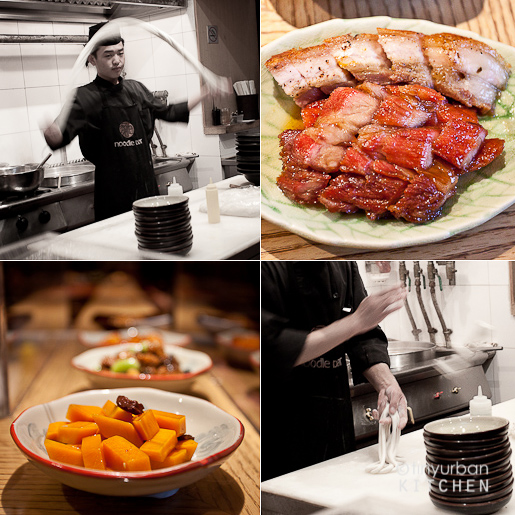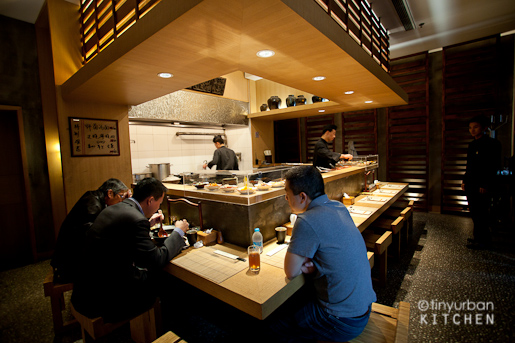 Voting is now open! To vote, click here.Just imagine with me for a moment . . . .
Voting is now open! To vote, click here.Just imagine with me for a moment . . . .It is the late 1800's and you are living in Xiamen (Amoy Island) in Southern China. It's only 6AM, but you know you have to get to the market soon before the rice mill closes.
Rice mill?Well of course! How else are you going to be able to get the rice to that fine consistency to make your lovely pumpkin cakes? You would hate to have to hand-grind it! Thank God for modern technology! You're so glad you remembered to soak the rice overnight so that you could bring it to the mill today.
Wait, did you say Pumpkin cake?
Oh, the savory Chinese pumpkin cake is a very unique regional specialty. It's so localized, you're not sure if they make this in any other part of China. The dish takes a ton of work, but it's so worth it. In fact, if there were just one dish you would want to pass down to your family, it would be these scrumptious pumpkin cakes.
After getting your rice milled to a lovely paste, you pick up some pumpkins from the market and begin the laborious task of slowly peeling off thin shreds of pumpkin layer by layer with a knife. It takes a few hours, but eventually you have a huge bowl of finely shredded pumpkin, which you then slowly cook in a huge wok until they are soft.
Finally, several additional steps later, you serve your family the famous "CHE" pumpkin cakes. Beyond excited, the entire family devours these moist, slightly crunchy, and very pumpkin-y cakes. You think about how long it took you to perfect the skill of making these, and you vow to keep it alive in the family, hopefully for generations to come.
Family TraditionsIf you haven't guessed yet, the above story refers to Bryan's great-grandmother who grew up in southern Fujian in China. We love love love these savory pumpkin cakes and always look forward to having it in the fall when Bryan's mom makes it for the holidays.
For three generations straight, this pumpkin dish has lived on in the CHE family. Bryan's mom learned it from Bryan's grandmother, who likewise learned it from her husband's mother. Bryan's mom is now the only person in our extended family who knows how to make this dish. In fact, she is expected to bring it to all family potlucks because
everyone loves this dish, yet no one knows how to make it.

When Challenge 8 for Project Food Blog came around (yes, I'm still in!) with the charge "bake something with pumpkin," I knew it was time for me to accept my responsibility and keep the family tradition alive. I contacted Bryan's mom and asked her to teach me how to make the CHE savory pumpkin cake.
In order to add my own spin to the challenge, I also decided to create two sweet interpretations inspired by the traditional CHE family recipe.
Traditional Savory Pumpkin CakeYou read above how labor-intensive this dish used to be - can you imagine hand milling rice flour or shredding pumpkins? Bryan's mom, who emigrated to the US a little over 30 years ago, felt that the traditional Chinese method wa
s TOO time consuming (
I can't believe she actually tried it the traditional way a few times). She modified the recipe by incorporating modern technology available in western kitchens.

Instead of wok-frying tiny shreds of pumpkin into a puree, bake pumpkins (in a pan filled with a little water and covered with foil) at 350 °F for about 1 hour. Mash up the pumpkin puree.

There is a lot of flexibility in what ingredients you choose to put inside the cake. The traditional CHE family recipe uses a mixture of dried shrimp, scallions, shallots, Shitake mushrooms, and pork loin. These are separately stir-fried with soy sauce, rice wine, and a few other flavoring agents before being mixed in with the pumpkin.
Separately, the pumpkin puree is mixed with rice flour (yay, we can buy it in the market now, no need for hand-milling!). Finally, mix everything together and bake!

You can eat these lovely cakes straight out of the oven. Or, if you like an extra crunch, you can pan-fry them right before serving.
These were absolutely delicious, and I got Bryan's stamp of approval (most important judge!!!). Tons of thanks to both Bryan's mom and dad for sharing with me the recipe and the story behind the recipe (recipe at the end of the post).
Pumpkin Mochi CakeAs rice flour was the key ingredient in the savory pumpkin cakes, I decided to make a sweet version by replacing the rice flour with sweet rice flour (e.g., Mochiko). I based this cake off of an
earlier red bean mochi cake I had made).

I actually tried two versions of this cake. The first one, I used butter, coconut milk, and 5 eggs, a version that is very popular in Hawaii. The second version, I used vegetable oil and only 3 eggs. The two cakes were different, but both very good - it's really a matter of preference.
If you like a moist and more pudding-like cake, you might prefer the butter version. If you love the dense chewiness of mochi, you might prefer the vegetable oil version. I brought both to a dinner party the other night (all Asians), and they all preferred the second, "mochi-like" one.

Thousand Layer Spiral Mooncake
The second pastry I decided to make was inspired by one of my favorite pastries from Taiwan. These pastries are called "Thousand Layer Spiral Mooncakes" because layers upon layers of flaky pastry are rolled up into a beautiful spiral. The version that I loved from Taiwan was made with a taro and mochi filling.
Because I had pumpkin mochi cake already on hand, I decided to incorporate it into my own "pumpkin" version of this spiral moon cake.
These pastries are a bit complicated to make, as the method involves making two types of dough - an "oil dough" and a "water dough." Have you heard the old saying, "oil and water don't mix"? That is the loose principle behind why this dough works. You wrap one type of dough over another, and then you flatten, roll it up, flatten again, and roll it up a couple times in order to create the layers. I will post a video later on this week to demonstrate the exact steps for making these cool pastries!
[Update: Video is here! For video post click here!] As a final step, you flatten the rolled out halves (which you have cut with a very sharp knife), and you wrap your favorite filling.
I decided to make cinnamon flavored pastry and I filled the inside with sweetened pumpkin puree (sweetened with brown sugar), and pieces of pumpkin mochi (from above). Bake at 350 ° F for about 30 minutes, or until the edges are brown. Serve!

Look at those lovely layers!

You can be super flexible with the fillings. I did a mixture of sweetened pumpkin puree, pumpkin + mochi, and mochi only pastries.
Epilogue
So there you have it - a trio of Asian snacks all originally inspired by the CHE family pumpkin cakes. As a person who does not bake on a regular basis, this challenge truly stretched me to my limits. I definitely had my share of trials and errors (can't even tell you HOW MANY spiral mooncakes are hanging out in my kitchen right now), but I came out of it a stronger baker, I believe.
Thanks all so much for your support thus far.
If you are so inclined, please vote for me tomorrow (voting opens Monday!). Update: Voting is open now!
Please click here to vote.RECIPES
"Nan Gua Gao" Savory Chinese Pumpkin Cakes
2 lb pumpkin flesh, baked and mashed
1 lb long grain rice flour
1 lb pork loin, cut into 1-2 cm chunks
1 T Dried shrimp, soaked and rinsed
5-7 Dried shitake mushrooms, soaked, rinsed, and sliced
3-4 shallots, peeled and chopped
3 stalks of scallions, chopped
1/4 tsp five spice powder
1-2 T Chinese Shaoxing rice wine or sherry
Mix pork with soy sauce and cornstarch and let marinate for 20 minutes. Heat the vegetable oil in a large wok (or Dutch oven) until hot. Add dried shrimp, Shitake mushrooms, shallots, and scallions and stir fry for a few minutes until the shallots are translucent. Add the marinated pork and stir fry for about a minute. Add five spice powder, garlic powder, white pepper and cooking wine and continue to stir fry until the meat is cooked. Set aside.
Mix mashed pumpkin with the rice flour and mix thoroughly. Add the Stir Fry Ingredients and mix well. Pour batter into a well-oiled pan. Put the pan inside of a larger pan full of water. Cover both pans with foil and bake at 350 °F for about 1.5 hours (for a 9x13 pan) or about 40 minutes for individual muffin tins. Time varies depending on the size of the pan, so definitely check often. Cake is done when a toothpick or fork inserted comes out cleanly.
Cake can be eaten as is or pan fried for further "crunch."

1 lb glutinous rice flour
1 cup pumpkin, baked and mashed
Combine all ingredients and mix until well combined. Bake at 350 ° F for at least one hour depending on the pan. A bundt cake will take over an hour, whereas two loaves will take less time. Cake is done when an inserted toothpick comes out cleanly.
Alternate Pumpkin Mochi Cake recipe
1 lb glutinous rice flour
1 cup pumpkin, baked and mashed
1 stick of butter, melted
1 can (14oz) coconut milk
5 eggs, beaten
Cream together sugar with butter. Add remaining wet ingredients. Add dry ingredients. Bake at 350 ° F until inserted toothpick comes out cleanly (about 1 hour and 15 minutes if using a bundt pan).
Important! Let cake cool completely before trying to remove from pan (this can take several hours). I learned (the hard way) what happens when you don't wait. Essentially, part of the cake will stick to the pan and your entire cake will fall apart and be ruined. :(

Thousand Layer Spiral Mooncakes
Mix all ingredients together (easiest with hands) until a soft dough forms. Wrap in plastic wrap and let rest for 20 minutes. Divide into 4 balls. Set aside.
Mix all the ingredients together until a soft dough forms. Divide into 4 balls. Set aside.
Wrap water dough over the oil dough (repeat four times). Take one dough and roll out flat to about 1/8 inch thin. Once rolled out, roll up like a swiss roll. Using a rolling pin, flatten and roll out the swiss roll lengthwise. Using your fingers, roll the flattened dough up again into another roll. Using a sharp knife, cut the dough in half.
With cut side up, flatten a dough half and roll it out to about 4-5 inches in diameter. Measure about 100g of filling for each ball. Wrap the dough over the filling.
Bake at 350 ° F for about 30 minutes or until the edges are browned.

















































